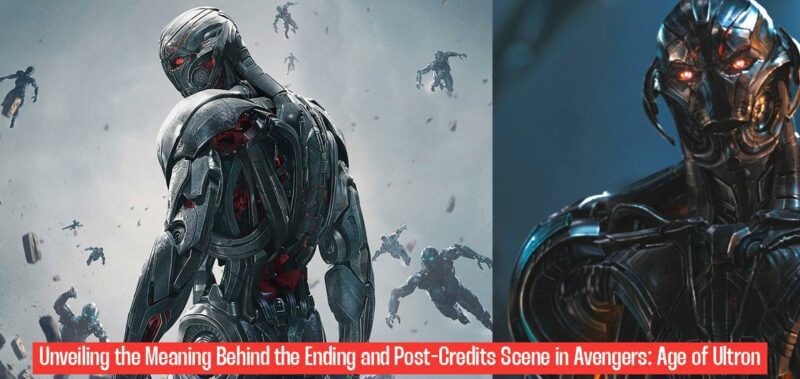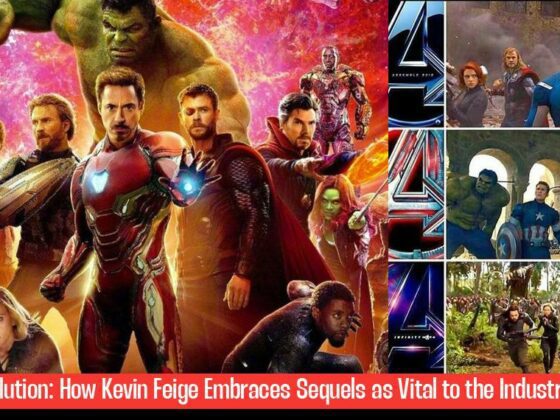Avengers: Age of Ultron Ending and Post-Credits Scene Explained
Avengers: Age of Ultron, the sequel to the groundbreaking superhero film Avengers, left audiences on a cliffhanger, with a post-credits scene that sent shockwaves throughout the Marvel Cinematic Universe (MCU). The film’s conclusion, which saw the Avengers triumph over the villainous Ultron, was just the beginning of a larger story unfolding in the cosmos. The post-credits scene, featuring Thanos, the Mad Titan, served as a tantalizing teaser for the future of the MCU, hinting at a looming threat that would ultimately culminate in the events of Avengers: Infinity War.
The ending of Age of Ultron saw the Avengers regrouping after the devastating battle with Ultron, their world rocked by the chaos and destruction unleashed by the artificial intelligence. The team, battered and bruised, had to come to terms with the consequences of their actions, including the loss of their beloved headquarters, Avengers Tower, and the deep emotional toll on each member. The final scenes showed the Avengers establishing a new base in upstate New York, with Nick Fury, Maria Hill, and other familiar faces taking over the reins.
Meanwhile, the fate of Thor, the God of Thunder, remained uncertain. After experiencing visions of the Infinity Stones, Thor decided to embark on a solitary journey to seek answers and understand the cosmic forces at play. His departure, while initially unclear, was a pivotal moment, signifying the beginning of his quest to unravel the mysteries of the Infinity Stones and their potential impact on the universe.
The post-credits scene, however, stole the show. It shifted the focus from Earth to the vast expanse of space, introducing the enigmatic figure of Thanos. We see Thanos standing in a dimly lit vault, surrounded by a sense of foreboding. He opens a chest and reaches for a gauntlet, the same gauntlet that would later play a crucial role in Infinity War. As he puts on the gauntlet, he utters the ominous words, “Fine. I’ll do it myself.”
Decoding the Post-Credits Scene
The post-credits scene of Age of Ultron is a masterclass in foreshadowing and subtle world-building. It serves as a wake-up call for the audience, indicating that the Avengers’ battle with Ultron was merely a prelude to a much larger conflict. Thanos, the Mad Titan, is revealed as the ultimate antagonist, a figure of immense power and ambition, with plans to reshape the universe according to his own twisted vision.
The scene subtly reveals Thanos’ motivations. He is driven by a desire for control, a hunger for power that knows no bounds. He seeks to collect the Infinity Stones, powerful relics that grant their wielder unimaginable abilities. Thanos’ words, “Fine. I’ll do it myself,” are a chilling declaration of intent, a promise to take matters into his own hands and achieve his goals, no matter the cost.
The scene also reveals a key detail about Thanos’ plans: he intends to “do it himself.” This implies that he is tired of relying on others, like Loki and Ronan, to collect the Infinity Stones for him. Their failures have fueled his ambition, prompting him to take a more direct approach. Thanos is no longer content to manipulate others from the shadows; he is ready to step out into the light and claim his destiny.
The Implications for the Future
The post-credits scene of Age of Ultron had a profound impact on the MCU, setting the stage for the epic saga that unfolded in Infinity War and Endgame. It established Thanos as the main antagonist, a formidable foe with cosmic ambitions and a penchant for destruction.
The scene also hinted at Thanos’ ultimate goal: to collect all six Infinity Stones and use their power to reshape the universe. This desire, driven by a warped sense of justice and a belief in the need for balance, would lead him to enact a horrific plan that would claim the lives of millions.
> Who will be at the helm of Avengers 5?
The scene serves as a reminder that the Avengers’ fight is far from over. The threat posed by Thanos is far greater than anything they have encountered before. The events of Age of Ultron, while seemingly concluding the conflict with Ultron, were merely a stepping stone, a prelude to a much larger battle that would determine the fate of the universe.
The Gauntlet and Its Significance
The gauntlet that Thanos puts on in the post-credits scene is a crucial element of his plan. It acts as a conduit for the Infinity Stones, allowing him to harness their power and unleash his true potential. The gauntlet itself is a symbol of power and ambition, a reminder of the immense power that Thanos seeks to wield.
The scene also provides a key detail about the gauntlet. The gauntlet seen in Asgard, which was used by Odin to contain the Infinity Stone, fits a right hand, while the gauntlet Thanos wears in the post-credits scene fits his left hand. This implies that the gauntlet was not merely a one-off creation; it was likely part of a larger plan, a masterfully crafted weapon designed to unite the Infinity Stones and reshape the universe.
Thanos’ Rise to Power
The post-credits scene of Age of Ultron marks the beginning of Thanos’ rise to power. He is no longer a shadowy figure lurking in the background, manipulating events from afar. He is now actively pursuing his goals, gathering the resources he needs to fulfill his twisted vision.
The scene also serves as a reminder that the Avengers are not alone in their fight. Thanos is not the only one seeking the Infinity Stones. Other factions, both benevolent and malevolent, are also vying for control of these powerful relics. The race for the Infinity Stones has begun, and the stakes are higher than ever before.
The Importance of the Post-Credits Scene
The post-credits scene of Age of Ultron is a testament to the power of subtle storytelling and the importance of foreshadowing. It serves as a bridge between two major chapters in the MCU, setting the stage for the epic battle that would unfold in Infinity War and Endgame.
The scene is not merely a tease for the future; it is a vital piece of the puzzle, a crucial element in the larger narrative of the MCU. It provides context for the events of Infinity War and Endgame, explaining the motivations behind Thanos’ actions and the origins of his quest for power.
> Tina Knowles Proudly Celebrates Granddaughter Blue Ivy’s BET Award Win
The scene is also a reminder of the power of the post-credits scene, a tradition that has become synonymous with the MCU. These scenes are not simply an afterthought; they are carefully crafted elements that add depth and complexity to the narrative, providing clues to future events and expanding the world of the MCU.
Conclusion
The ending of Avengers: Age of Ultron, coupled with the post-credits scene featuring Thanos, left audiences on a cliffhanger, eager to see how the Avengers would confront the Mad Titan and his quest for power. The film’s conclusion served as a thrilling prelude to the epic showdown that would unfold in Infinity War and Endgame, a battle that would determine the fate of the universe.
The post-credits scene was a masterstroke of storytelling, introducing Thanos as the ultimate antagonist and setting the stage for the grand saga that would unfold in the years to come. It was a reminder that the MCU was not just about the Avengers; it was about a larger story, a cosmic tapestry woven with ambition, betrayal, and the struggle for ultimate power. The post-credits scene of Age of Ultron is a testament to the power of storytelling, foreshadowing, and world-building, a reminder that the MCU is a universe filled with endless possibilities.
What was the significance of the post-credits scene in Avengers: Age of Ultron?
The post-credits scene in Avengers: Age of Ultron introduced Thanos, hinting at a larger conflict and setting the stage for future events in the Marvel Cinematic Universe.
How did the ending of Avengers: Age of Ultron set the stage for future Marvel movies?
The ending of Avengers: Age of Ultron showed the Avengers regrouping and dealing with the aftermath of their battle with Ultron, while also teasing the cosmic journey of Thor and the looming threat of Thanos.
What was the significance of Thor’s departure at the end of Avengers: Age of Ultron?
Thor’s departure at the end of Avengers: Age of Ultron marked the beginning of his quest to understand the Infinity Stones and their impact on the universe, foreshadowing his role in future Marvel movies.
How did the post-credits scene in Avengers: Age of Ultron hint at the events of Avengers: Infinity War?
The post-credits scene in Avengers: Age of Ultron featured Thanos acquiring the Infinity Gauntlet, foreshadowing his role as the main antagonist in Avengers: Infinity War and the larger threat he posed to the Avengers and the universe.



